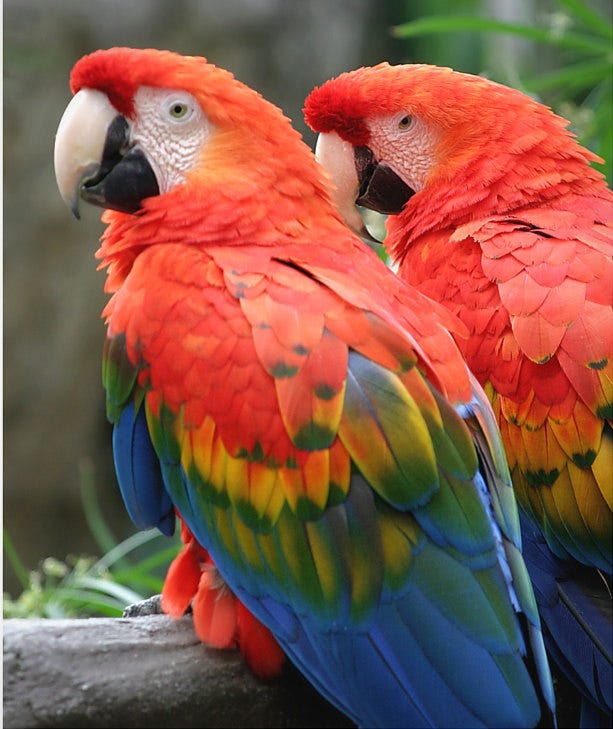In my Southern California neighborhood we get regular visits from flocks of feral Amazonian parrots. No one is quite sure where they escaped from, but they have thrived for more than forty years without having any negative effect on the environment. I’ve grown to love them for their resilient and resourceful free spirit, even with their sometimes unpleasant squawking and screeching at sunrise.
We’ve learned to associate bared fangs and red angry eyes with the word ‘feral’, but at its most basic it just means returning to a natural state after captivity. When a feral animal does go on the offensive, they do it to protect themselves – perhaps from returning to captivity. I admire the feral among us for their ability to survive in a world that prefers them tamed and docile.
Most of us grow up memorizing the rules of “civilized behavior” – how to look, dress, walk, think, and even feel. We learn to bend to the mandates of family, school, media and all the rest of toxic mainstream culture. Either we, unconsciously or consciously, let cultural domestication have its way or we rebel without direction or reason – we end up brittle, saying “NO!” to everything, even the things that might serve us well. We are animals denied our natural way of being in the world. As Clarissa Pinkola Estes says, we live as “disguised creatures.”
In addition to the trauma of toxic cultural conditioning, we may also have personal trauma like childhood abuse, domestic violence, and many other kinds of harmful events that have left wounds.
Despite it all, I believe we can, bit by bit, uncover our Feral Compass and ditch the masks that do not serve us.
Even though we often can’t remember a time before we internalized it all, we dream of ditching our false masks so that we might live as ourselves. We dream of going feral. And when we do, like the squawking of the feral parrots, some of the people around us might not like the less tamed version of ourselves. This is a risk we take in setting ourselves free.
So how do we go home? Where do our feral selves live?
The only map is found inside
the cells of your own heart. -Matt Licata
Like the feral parrots, we have an internal compass made of our instinct, intuition and creative resourcefulness that leads us back to ourselves. With a feral compass there isn’t just one true north – it could be true west or true southeast! Our task is to turn down the noise of the trauma inducing cultural indoctrination so that we can begin, small step by small step, to live into the feral truth we find.
One last thing I haven’t told you about the flocks of feral parrots: Although they’re all Amazonian parrots, they’re not all the same species of Amazonian parrots. In the wild their habitats, behaviors and appearance change from one species to the next. Essentially, they’re like neighbors that never speak to one another. Yet, in their feral state they’ve banded together to not only survive, but to thrive! I’m not only in awe of that, I see how we can and are doing something similar.
When we do the work of finding our own way in the world, we begin to connect with other people doing the same thing – we can truly see one another to make those connections because we’ve thrown away our disguises. Folks who may have never reached out for one another because of differences in place, different life-styles or even appearances, find one another and thrive in their personal and collective lives.
We can shake off the shackles and embrace liberation!
Find out about working with me to uncover your Feral Compass




Love this Feral Compass Outline/Intro